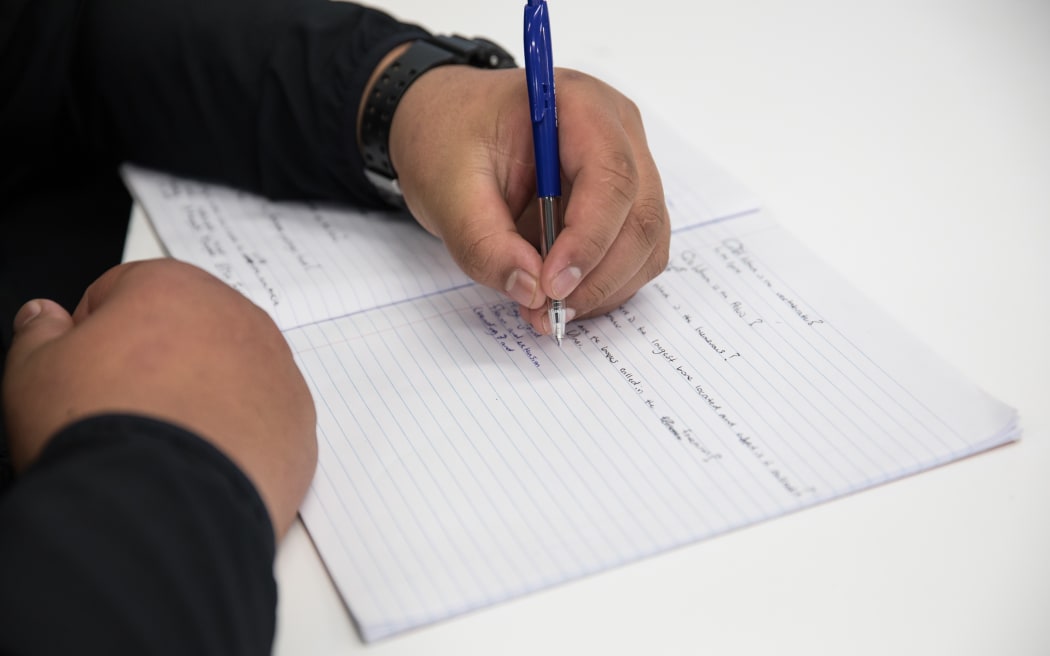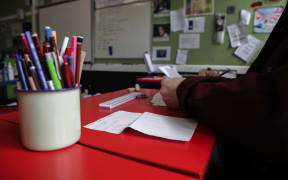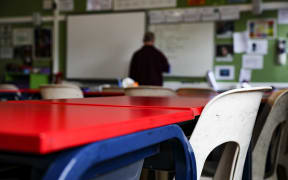
Primary schools would have between 640 and 1030 more teachers than required next year, a new report says. Photo: RNZ / Cole Eastham-Farrelly
The Ministry of Education is confident there will be no shortage of primary school teachers next year, but the supply of secondary teachers could go either way.
The ministry's teacher supply forecast, published Thursday afternoon, said secondary schools could be short 40 teachers in 2023 or have a surplus of 370.
Primary schools would have between 640 and 1030 more teachers than required next year, it said.
The estimates were an improvement on previous forecasts for 2023, and took into account the September announcement of $24 million for extra measures to head off what the government described at the time as a potential staffing "crisis".
The report said secondary schools would need 28,090 teachers next year, and demand would peak at 28,590 in 2025.
"The overall 'demand' for teachers in 2023 in this projection has dropped by 630 teachers when compared to the previous projections, due to a lower forecast for school rolls," the report said of secondary teachers.
"This is due to reductions in net migration expectations, record low student retention rates in 2022 and more students moving into home-schooling pathways."
Primary schools would need 35,930 teachers next year and 35,120 by 2025.
The ministry forecast a "high supply" scenario that assumed the arrival of 1000 new overseas-trained primary and secondary teachers for next year and a "low supply" scenario of about 600.
The high estimate for secondary school teachers was a surplus of 370 teachers next year and 40 in 2024, but a shortage of 130 in 2025.
The low scenario for secondary teachers was a shortfall of 40 teachers next year, 510 in 2024 and 620 in 2025, assuming the government took no action to try to avoid the shortages.
For primary school teachers, the estimates ranged from an oversupply of 1030 next year and 2260 by 2025, to an oversupply of 640 next year and 1790 by 2025.
The report said projected demand for primary teachers next year was 570 teachers below previous estimates because forecast school rolls were lower than expected.
The report said retention rates were a key part of the forecast, because a 1 percent shift was equal to more than 600 teachers.
It said fewer teachers left their jobs last year resulting in a retention rate of more than 91 percent, but this year it dropped to 89 percent, about the historical average.
The report said the high supply scenario was based on retention rates remaining at their pre-Covid levels, and the low supply scenario assumed worse retention rates next year as more people left the workforce, including young teachers moving overseas.
The ministry's forecast included teachers funded by the government based on school enrolments, and those funded by schools themselves.
It said even if there were enough teachers, the ministry would need to help schools find teachers to work in hard-to-staff regions, and subjects such as science and technology, te reo Māori and Māori-medium education.





